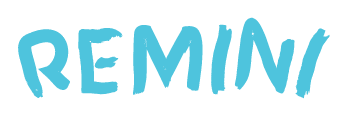

Children are exposed to digital technologies in the form of mobile phones, tablets, and laptops as early as the age of 2 in the current world. Through exposure to the digital world, they can either get informative information or disruptive information. App creators have found a niche in this area and have created applications that are educative and informative to children of all ages. In the same token, the app creators have also distinguished between pre-school and kindergarten apps and general Educational Apps. We shall look in-depth at pre-school and Kindergarten apps to illustrate their advantages compared to other educational Apps.
1. Made easy for easier Understanding
Apps made specifically for pre-school and Kindergarten like the Fuzzy Numbers: Pre K-Number Foundation’ combine math and Fairy tales to help pre-school children grasp scientific research while at the same time making it easy and fun for the children to understand. They also use a variety of colors and images to attract and keep the children’s interest. Other educational apps may not take into consideration the purpose of combining mysterious characters like fairies with numbers or words but will go straight to the point for purposes of educating.
2. They use cartoon characters well known to pre-school and Kindergarten children for memory
Pre-school and Kindergarten apps like Elmo Loves 123s’ tend to use cartoon characters well known to the children. This helps with the children’s memory and grasping of information like counting numbers, coloring and figuring out puzzles. Other educational apps generally use words, numbers and perhaps an instructor’s voice for instructions because their main purpose is to educate children and not to entertain them.
3. Adopt to a child’s skill level
Many pre-school and Kindergarten apps adapt to a child’s skill level and will allow children to adapt to different instruction depending on their skills. This does not only involve the mental skills but the physical skills of a child as well. By being able to sit and stand or move around along to the songs and danc-es, then the parents and children’s instructors can monitor the children’s physical and mental skills. Some of the other educational apps may be developed to move to higher levels regardless of students’ progress.
4. Allow parents and Teachers to track Progress
Many pre-school and Kindergarten apps, like Remini app, allow for both the parents and the teachers to follow up on a child’s progress throughout the app. This gives the child’s instructor direction as to how to move for-ward with each child. It also allows for an instructor or a teacher to move at the pace of each child in kindergarten without delaying other children’s progress but understanding and allowing the children with slower learning capacity to catch up at their won time.
5. Pre-school and Kindergarten apps use a lot of song and Dance
The pre-school and Kindergarten apps unlike most educational apps use a lot of music which may involve rap or general singing and dancing to keep the learners excited, keep their attention for a longer period and improve the children’s long term memories as well as association. Any time a child hears a familiar beat, they are likely to relate it to numbers, animals, words or alphabetical letters they learned from listening to the song.
6. Uses basic games to teach lessons
Some apps like the Peek a Boo Barn’ have combined common games like the peek a boo game and lessons. The app teaches children how to identify animals that are hiding in a barn thereby teaching them how to identify different types of animals. Most of the other educational apps for higher grades will use technical teaching methods.
7. The apps are monitored
The pre-school apps are monitored and require supervision from instructors and parents. This ensures that the toddlers are not exposed to any other explicit websites since their devices are constantly being monitored and will therefore mostly generate only G rated educative information. Some of the other educational apps may not be one hundred percent monitored leading to the student being exposed to inappropriate or irrelevant information.
8. The apps make it easier to assign work and monitor progress.
Kindergarten teachers can assign work to be done at home by children and can monitor and evaluate it by the minute rather than go through the tedious process of having to wait for the assignments to come in and having to write reports on them.
9. Apps easy for instructors to use.
Compared to other educational apps, Pres-school and kindergarten apps are easy to use even for instructors and therefore may not require any form of training for the instructors to take the children through learning sessions. Other educational apps may require instructors to undergo training to be able to inter-act with the learners.
Generally, most educational apps that are not specific to pre-school or kindergarten may have information that is very direct and to the point with no illustrations like cartoons or no use of bright colors and characters well known to children of Kindergarten and pre-school going age. This may cause a lack of interest in children who have poor attention spans and are easily distracted. Because they are not monitored as closely as the pre-school and kindergarten apps, they may also contain a lot of information that is irrelevant and not quite educative. Some of the apps may also contain information that is too complex for toddlers that are in pre-school and kindergarten to understand.
While there are thousands of apps that have been created for educational purposes, there are those created specifically for Pre-school and Kindergarten going children. These apps specific to these groups of children are highly monitored by parents, teachers and app developers because of the sensitive group that they are created for. They are highly educative and informative to children and are greatly accept-ed as a modern way of teaching. no matter what app you will choose in the end, make sure to read reviews in order to make sure you make the right choice
